Fleurs du Mal Magazine


Or see the index
Im Selbstporträt verkörpert sich programmatisch das Grundwesen der Moderne.
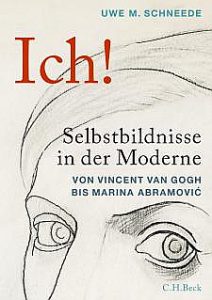 So wie das christliche Altarbild im Mittelalter oder die Landschaft in der Romantik, so stellt das Selbstporträt die neue symbolhafte Gattung in der Kunst des 20. Jahrhunderts dar. Erstmals liegt nun mit diesem Buch eine umfassende Überblicksdarstellung über das Selbstporträt in der Moderne vor.
So wie das christliche Altarbild im Mittelalter oder die Landschaft in der Romantik, so stellt das Selbstporträt die neue symbolhafte Gattung in der Kunst des 20. Jahrhunderts dar. Erstmals liegt nun mit diesem Buch eine umfassende Überblicksdarstellung über das Selbstporträt in der Moderne vor.
Selbstbildnisse sind keine Erfindung der Moderne. Sie kamen bereits in der Renaissance auf – jedoch rückte die Gattung erst im 20. Jahrhundert in den Mittelpunkt und wurde zum zentralen Anliegen der Künstlerinnen und Künstler. Während es zunächst in den Werken von Vincent van Gogh, Edvard Munch, Käthe Kollwitz oder Paula Modersohn-Becker um eine schonungslose Selbstanalyse ging, gerät ab 1960 der eigene Körper als Akteur in den Blick – so etwa bei Bruce Nauman, Cindy Sherman, Marina Abramovic oder Joseph Beuys.
Uwe M. Schneede schildert eindrucksvoll, wie sich über einen Zeitraum von über hundert Jahren die inhaltlichen und formalen Beweggründe immer wieder paradigmatisch verändert haben – und erzählt so am Beispiel des Selbstbildnisses eine andere Geschichte der modernen Kunst.
Uwe M. Schneede war von 1991 bis 2006 Direktor der Hamburger Kunsthalle, zuvor lehrte er Kunstgeschichte der Moderne an der Ludwig-Maximilians-Universität in München.
Schneede, Uwe M.
Ich!
Selbstbildnisse in der Moderne
978-3-406-78747-8
Erschienen am 12. September 2022
240 S., mit 96 Abbildungen
Hardcover
€ 29,95
• fleursdumal.nl magazine
More in: - Book News, - Bookstores, Archive S-T, Art & Literature News, Art Criticism, Joseph Beuys, Käthe Kollwitz, Marina Abramović, Poets' Portraits
Sie gilt als Künstlerin des sozialen Elends und der schmerzlichen Tragik des Krieges – Käthe Kollwitz.
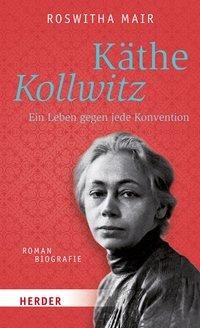 Fröhlich, unkonventionell, sinnlich, neugierig – all das ist sie Zeit ihres Lebens. Immer wieder bricht Kollwitz mit gängigen Konventionen. So reist die Mutter von zwei Kindern etwa 1904 alleine nach Paris – eigentlich undenkbar zu dieser Zeit -, um die Kunst des plastischen Gestaltens zu lernen. Dort trifft sie u.a. auf Rodin.
Fröhlich, unkonventionell, sinnlich, neugierig – all das ist sie Zeit ihres Lebens. Immer wieder bricht Kollwitz mit gängigen Konventionen. So reist die Mutter von zwei Kindern etwa 1904 alleine nach Paris – eigentlich undenkbar zu dieser Zeit -, um die Kunst des plastischen Gestaltens zu lernen. Dort trifft sie u.a. auf Rodin.
Als zu Beginn des Ersten Weltkrieges ihr Sohn ums Leben kommt, beherrscht dieses Trauma über viele Jahre ihr Leben wie auch ihre Kunst.1919 wird sie als erste Frau Professorin an der Preußischen Akademie der Künste, bis nach Hitlers Machtergreifung ein dunkler Schatten über das Land zieht und sich auch auf ihr Leben legt.
Eine tiefgründige Romanbiografie, die das außergewöhnliche Leben dieser beeindruckenden Künstlerin facettenreich einfängt.
Roswitha Mair, Dr. phil., ist Kunsthistorikerin und lebt in Innsbruck. Zahlreiche Veröffentlichungen und Beiträge zur Kunst des 20. Jahrhunderts sowie Organisation und Konzeption von Kunstausstellungen.
Roswitha Mair :
Käthe Kollwitz.
Ein Leben gegen jede Konvention.
Romanbiografie
‘Herder Spektrum Taschenbücher’
Herder Verlag GmbH
Juni 2017
231 Seiten
Kartoniert – Broschiert
Sprache: Deutsch
€16,00
EAN: 9783451069734
ISBN: 3451069733
new books
fleursdumal.nl magazine
More in: - Book News, Archive K-L, Archive M-N, Art & Literature News, Galerie Deutschland, Käthe Kollwitz, Sculpture, WAR & PEACE
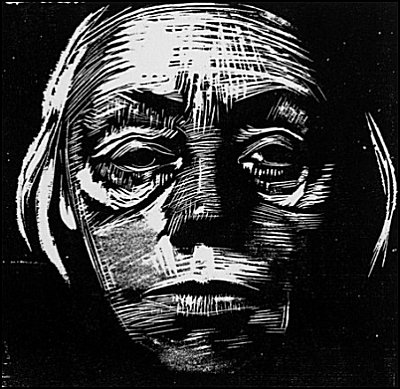
K ä t h e K o l l w i t z
D i e T o t e n m a h n e n u n s
( I I ) B i l d e r
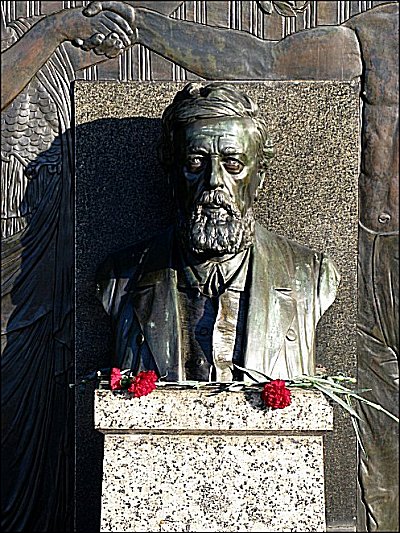
Denkmal Karl Liebknecht
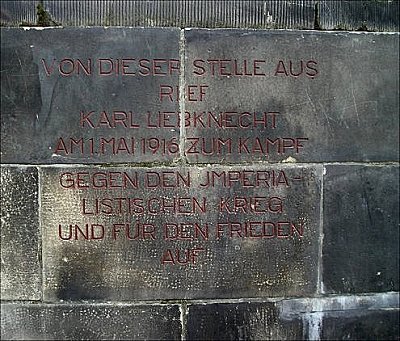
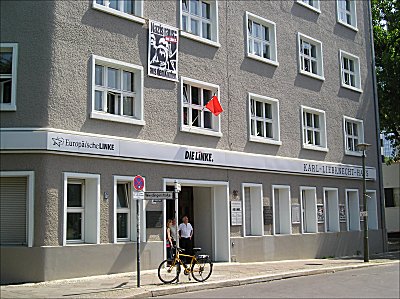
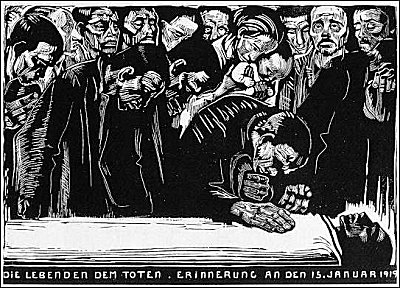
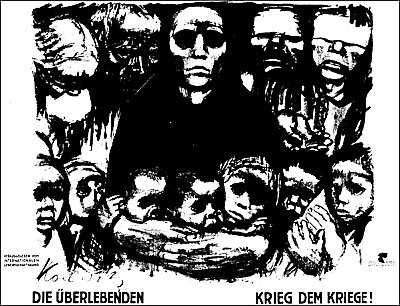

Denkmal Ernst Thalmann
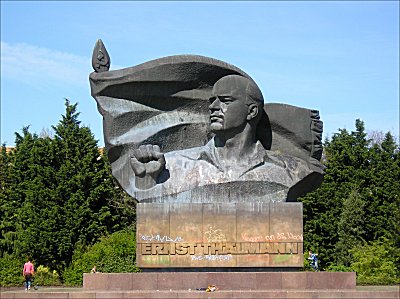
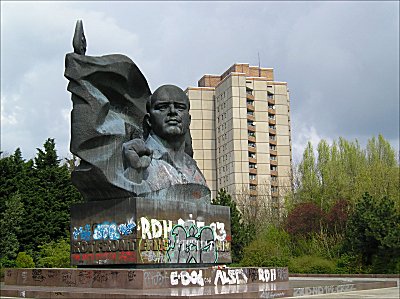

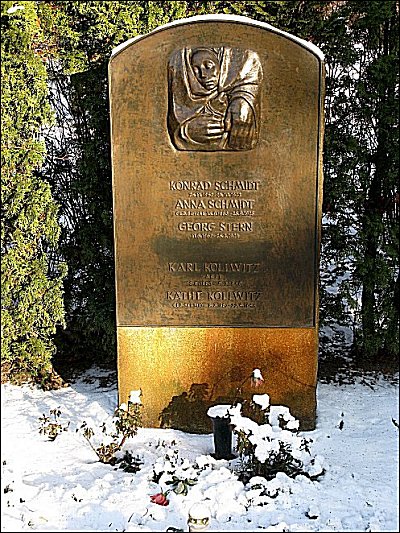
.jpg)
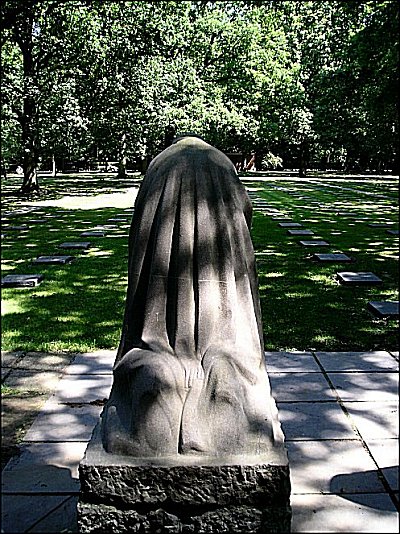

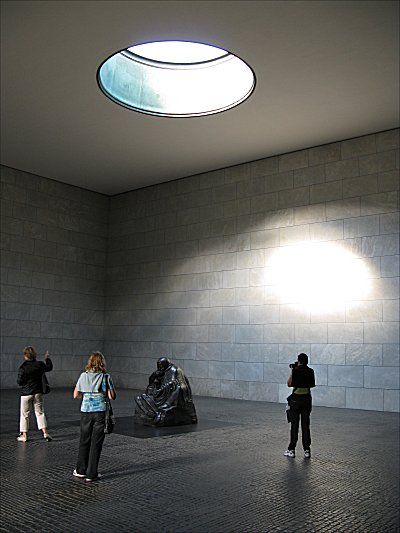
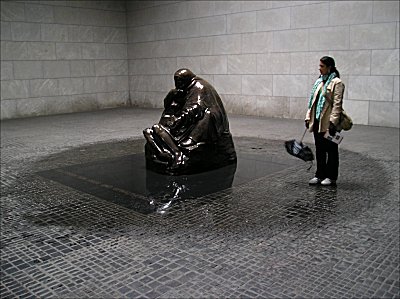

Käthe Kollwitz
Die Toten mahnen uns (II) Bilder
Photos: Anton K. Berlin
fleursdumal.nl magazine – magazine for art & literature
More in: *War Poetry Archive, Anton K. Photos & Observations, Käthe Kollwitz
.jpg)
K ä t h e K o l l w i t z
Die Toten Mahnen uns
Berlin
The street names still reflect old DDR times, before the demolishment of the wall in 1989. The Karl-Liebknecht-Straße runs alongside the Alexanderplatz and connects Prenzlauer Berg to the Museuminsel and Unter den Linden. At the Rosa-Luxembourg-Platz, a few hundred meters to the north, a monument to Herbert Baum and a memorial plaque to Ernst Thälmann commemorate the resistance of the communists against fascism and against the wars that overshadowed life in Europe during the first half of the 20th century. The rise of a working class who lived in miserable conditions dominated social discussions in the early 1900’s. In 1914 a complex combination of imperialism, militarism and strong nationalistic feelings led to the First World War which eventually involved 75 percent of the world’s population and took the lives of 20 million soldiers and civilians. After the war the political situation in Germany remained unstable. The Treaty of Versailles declared Germany responsible for the war, it redefined its territory and Germany was forced to pay enormous war reparations. This treaty caused great bitterness in Germany and was a source of inspiration for both left and right extremism. It eventually led to the rise of fascism and the Second World War. Karl Liebknecht and Rosa Luxembourg, founders of the Kommunistische Partei Deutschland (KPD), were killed in 1919 by Freikorpsen, right extremist remainders of the German army. Herbert Baum and his resistance group were killed by the Gestapo in 1942 and Ernst Thälmann, Hitlers political opponent during the elections of 1932, was executed in Buchenwald in August 1944, on direct orders from Hitler.
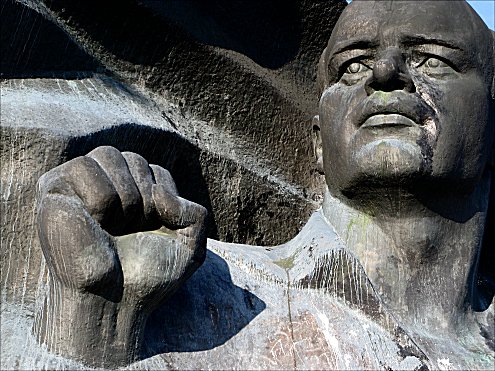
Käthe Kollwitz
Käthe Schmidt was born in Königsberg in 1867 in a family of social democrats that were sensitive to the changes that were taking place in society. Her talent for art was recognised and stimulated by her father. She received lessons in drawing in a private art school in Berlin. Under the influence of her teacher Stauffer-Bern and the work of Max Klinger she decided to focus on black and white drawing, etching and lithography. She married Karl Kollwitz, a friend of the family, in 1891. Karl had decided to dedicate his live to the poor working class and started a doctor’s practice in Prenzlauer Berg in a street that is now called the Käthe-Kollwitz-Straße. They had 2 sons, Hans and Peter. Käthe was deeply moved by the social misery she was confronted with in her husbands practice and the life of the working class became a dominant theme in her work. It was Gerhard Hauptman’s play ‘die Weber’ that inspired her to her first successful series of etchings called ‘Ein Weberaufstand’. Another successful series was ‘Bauernkrieg” for which she received the prestigious ‘Villa Romana’ price. At the age of 50 Käthe had become famous throughout Germany and to the occasion of her birthday, exhibitions of her work were held in Berlin, Bremen and Königsberg.
In October 1914 her son Peter was killed in the trenches of Flanders. To his memory Käthe designed a monument which took her almost 18 years to complete. In Diksmuide-Vladslo, in a landscape covered by hundreds of war cemeteries, her ‘Grieving Parents’ impressively expresses the poignant grief and helplessness of parents who have lost a child. The death of her son had a great impact on her work and war and death became the dominant themes. When Karl Liebknecht was killed in 1919 his family asked Käthe to make a drawing to his memory. In a charcoal drawing she depicts the worker’s farewell to Liebknecht. A final version in woodcut was made 2 years later. Sieben Holzschitte zur Krieg were made in 1920/1923 and her famous poster Nie Wieder Krieg, a consignment by the International Labours Union, in 1924. She was not the only artist that stood up against war but while the artistic protests of for instance George Grosz, Otto Dix or Frans Masereel were primarily aimed at the horrors of the battlefield or the political climate, Käthe Kollwitz’s concern was with the human suffering of those who were left behind.
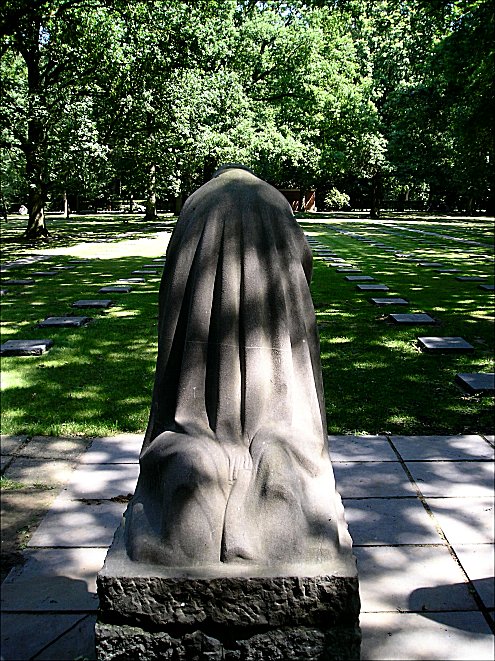
When the Nazis came to power in 1933, she and her husband signed an urgent appeal to unite the working class and to the formation of a front against Hitler. The SPD and KPD were forbidden by the Nazis and Käthe was removed from her position at the Berlin Art Academy where she was heading the Masterclass of Graphics. Exhibitions of her work were forbidden. Karl was also temporarily disallowed to exercise his practice and their financial situation became precarious until his ban was relieved due to a shortage of skilled physicians. Karl Kollwitz, after a life dedicated to the health of the poor, died in July 1940.
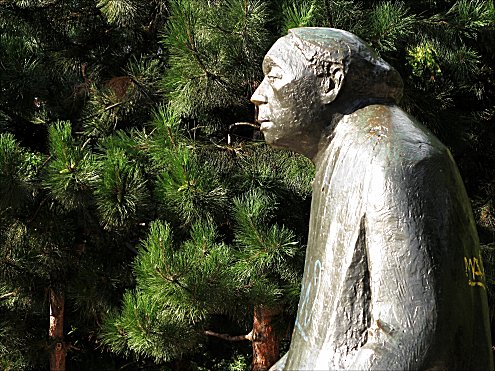
After Karl’s death Käthe suffered from depression and her physical condition was rapidly declining. The house in Berlin where she and Karl had been living since 1891 was bombed in 1943 and Käthe was evacuated to Nordhausen and later to Moritzburg. A few days before the end of the Second World War, in April 1945, Käthe Kollwitz died. She was buried in the family grave in Berlin-Friedrichsfelde at the same cemetery where a memorial monument pays tribute to the socialist heroes Karl Liebknecht, Rosa Luxembourg and Ernst Thälmann.

A mission
Käthe’s importance as an artist cannot be overvalued. Her authentic, expressive depictions of human misery, resulting from the exploitation of human labour, from fascism and war, are timeless, genuine and moving. She was not a politician but an artist with a vocation who found a way to make art that goes straight to the heart.
When you are in Berlin be sure to visit ‘Die Neue Wache’, a building designed by Christian Schinkel, which since the 1960-s is a monument against war and fascism. In the centre of the building, right beneath a circular opening in the ceiling, Käthe Kollwitz’s sculpture Mother and Child is an arresting plea for vigilance against mentalities and attitudes that may again lead to fascism and war.
References:
Ilse Kleberger: Kathe Kollwitz, Eine Biographie
Venues
Neue Wache – Unter den Linden near the Museuminsel
Kathe Kollwitzmuseum Berlin – Fasanenstrasse 24
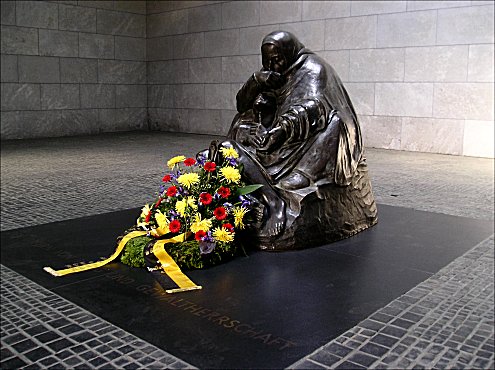
Käthe Kollwitz: Die Toten mahnen uns – part I
Photos & text: Anton K. Berlin
![]()
Find also on fleursdumal.nl magazine:
Nie Wieder: Wache gegen Faschismus
and
Historia Belgica: Alles voor Vlaanderen
![]()
fleursdumal.nl magazine – magazine for art & literature
to be continued
More in: *War Poetry Archive, Anton K. Photos & Observations, Fascism, Käthe Kollwitz, Sculpture
Thank you for reading Fleurs du Mal - magazine for art & literature